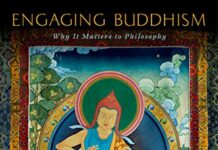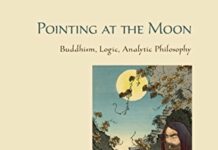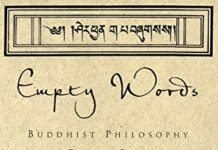
Ebook Info
- Published: 2015
- Number of pages: 302 pages
- Format: PDF
- File Size: 4.73 MB
- Authors: Jay L. Garfield
Description
Madhyamaka and Yogacara are the two principal schools of Mahayana Buddhist philosophy. While Madhyamaka asserts the ultimate emptiness and conventional reality of all phenomena, Yogacara is usually considered to be idealistic. This collection of essays addresses the degree to which these philosophical approaches are consistent or complementary.Indian and Tibetan doxographies often take these two schools to be philosophical rivals. They are grounded in distinct bodies of sutra literature and adopt what appear to be very different positions regarding the analysis of emptiness and the status of mind. Madhyamaka-Yogacara polemics abound in Indian Buddhist literature, and Tibetan doxographies regard them as distinct systems. Nonetheless, scholars have tried to synthesize the two positions for centuries. This volume offers new essays by prominent experts on both these traditions, who address the question of the degree to which these philosophical approaches should be seen as rivals or as allies. In answering the question of whether Madhyamaka and Yogacara can be considered compatible, contributors engage with a broad range of canonical literature, and relate the texts to contemporary philosophical problems.
User’s Reviews
Reviews from Amazon users which were colected at the time this book was published on the website:
⭐Madhyamaka is very popular in Tibetan philosophy as well as in some schools of Vietnamese and Chinese Buddhism, Yogacara is less so. Both these philosophical schools have contrary views on the understanding of and the build of up Buddha’s teachings as well as the means and methods by which they are realized by a person.The introduction is a good review of where Yogacara stands, where Madhyamaka stands (in light of their classical and original proponents) as well as those thinkers who tried to compare the two either in a synergistic or syncretic way.In the first chapter – there is a critical study of the 26th chapter of the Avatamsaka Sutra. This alone merits the overall study of the book as the Avatamsaka is a critical early Mahayana text but also is quite impenetrable. So we find core canon and its varying interpretation in these two distinct schools. Interestingly this particular chapter of the Avatamsaka also highlights the major ideological differences in the notion of phenomenology in Theravada and Mahayana.The third chapter deals with the technical differences in the vocabulary (similar and endemic to each school) as well as metaphorical allusions in texts of either school. While the gloss of this chapter may not seem appealing to a casual reader – its food for thought for those who want to study the actual texts of either school. I have studied some of the Yogacara texts in their original Sanskrit and found this chapter particularly useful in connecting some of the devotional/spiritually understood terms to a more philosophical context.The final section of this text deals with the interlocutors of the schools by arguing against the other.I would not recommend this book to someone casually reading about Buddhism, for anyone who seeks anything more than a philosophical or historical context of these schools (particularly their cohabitation of the same time and space). This is a scholarly text but for those who have looked into Madhyamaka and Yogacara (even at a superficial level) and were scratching their heads often in confusion, this aims to partly bridge the gap; and successfully does so (albeit partially).A more robust study, far more engaging and useful for a general reader is Mahayana Buddhism: The Doctrinal Foundations by Paul Williams.I think this book is sensational, it was a much welcomed difference of opinion in what I had so far surmised from what I read.
⭐Madhyamaka and Yogacara, consistent or conflicting approaches to emptiness? This anthology of articles by academic scholars addresses the finer points of this question. It is not for the casual student of Buddhism, but certainly a welcome addition for the very serious practitioner. It principally addresses the wisdom aspects of Buddhism. Those who want to refine their meditation practices need to look elsewhere. With that caveat, this book will prove rewarding.Don’t skip the introduction, it contains a roadmap for the rest of the book, and puts the teachings on the two doctrines in their historical context. The first chapter leaps into the depths of dependent arising. Familiarity with Sanskrit would come in handy, but with a little effort putting the terms into context, the meanings become clearer.After the introductory sections of the book, it is topical, the authors styles varied. It may be that the reader will want to jump around based on interest. There are several chapters on Nagarjuna’s approach, sections on emptiness and consciousness. The danger of nihilism is covered in other chapters. Karma has it’s place.This was a difficult read, a book to be slowly absorbed and reflected upon over time. Would you expect less from a group of renowned academics?
⭐Though Garfield is “only” the editor of this compilation his clarity of presentation and grasp of the breadth and depth of the topic is mirrored in all the essays. The examination of the tenents and philosophical implications of the Yogacara and Madhyamaka schools from a variety of standpoints serves to allow (perhaps force) the reader to come to grips with the subtleties of their related belief systems. Though not by any means a beginners book, anyone interested in a deep look at Tibetan Buddhist philosophy will benefit from reading these essays. At times one may disagree with a point made, or even the postulates assumed, but the stimulation to challenge, bend or break the boundaries of our personal beliefs is the point isn’t it? Enjoy the effort, it’s worth it.
⭐Unless you are well versed in Madhyamaka and Yogacara thought and love the technical aspects of philosophy stay away from this book. If you want a comparison Nagao’s book. Madhyamaka and Yogacara, is much more readable.
⭐Well presented comparison.
Keywords
Free Download MADHYAMAKA & YOGACARA C: Allies or Rivals? 1st Edition in PDF format
MADHYAMAKA & YOGACARA C: Allies or Rivals? 1st Edition PDF Free Download
Download MADHYAMAKA & YOGACARA C: Allies or Rivals? 1st Edition 2015 PDF Free
MADHYAMAKA & YOGACARA C: Allies or Rivals? 1st Edition 2015 PDF Free Download
Download MADHYAMAKA & YOGACARA C: Allies or Rivals? 1st Edition PDF
Free Download Ebook MADHYAMAKA & YOGACARA C: Allies or Rivals? 1st Edition




